Mascota Jalisco: A Nature Enthusiast’s Dream
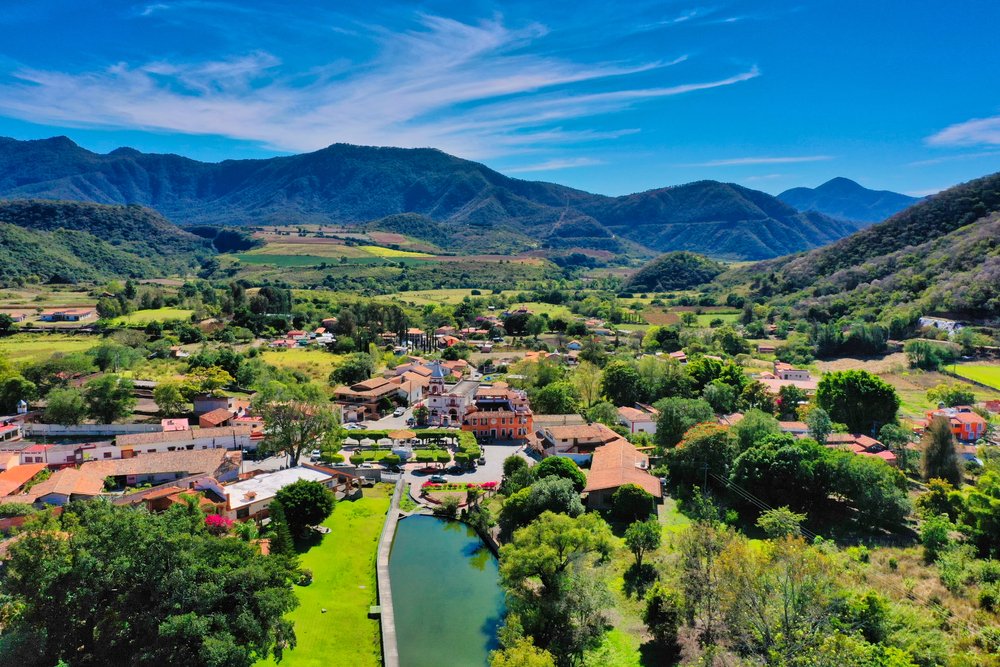
Mascota Jalisco: A Nature Enthusiast’s Dream
A couple hours from Puerto Vallarta, within the rugged terrain and lush landscapes of the Sierra Madre Occidental, lies a hidden gem waiting to be discovered by nature enthusiasts and adventure seekers alike.
Welcome to Mascota, a charming pueblo magico that embodies the essence of Mexico’s natural beauty and cultural heritage.
From towering mountains to winding rivers and dense forests, to picturesque valleys, Mascota offers a sanctuary for those yearning to escape the hustle and bustle of modern life and immerse themselves in the tranquility of the great outdoors.
Join me on a journey through the enchanting wonders of Mascota Jalisco, where every corner reveals a new facet of nature’s splendor and invites you to explore its untamed wilderness.
Where is Mascota Jalisco?
This town, also dubbed “La Esmeralda de la Sierra,” is between the Sierra Madre Occidental, 1269 meters above sea level, and a 2-hour drive from Puerto Vallarta.
Jalisco state’s capital, Guadalajara, is about 204 km to the east.
Mascota is the head of the municipality of the same name and is surrounded by the Jalisco municipalities of San Sebastián del Oeste, Talpa de Allende, Guachinango, Mixtlán, Atenguillo, and Puerto Vallarta.
How did Mascota Jalisco come about?
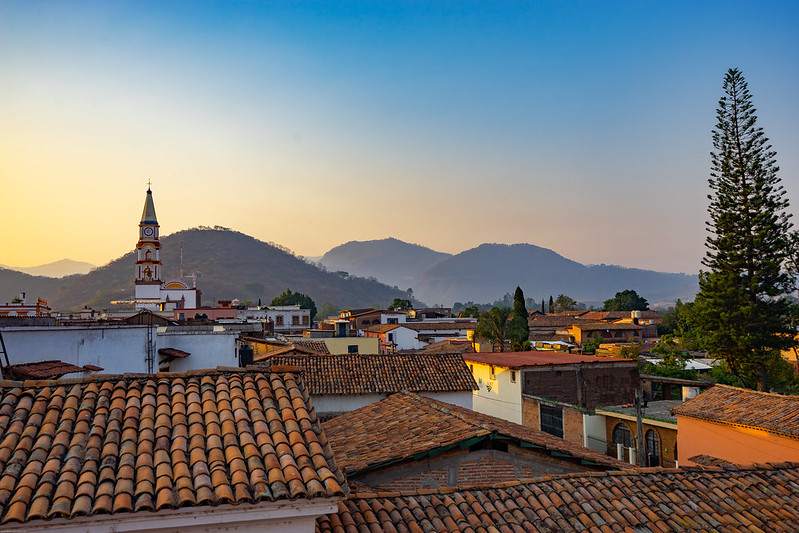
The name “Mascota” (which translates to “pet”) is not related to a companion animal.
The term comes from the Teko phrase “Amaxacotlán Mazacotla,” which means “Place of Deer.”
During the conquest, the site was called deer valley.
The Spanish town was founded in 1525, and its first encomendero was the conquistador Cristóbal de Oñate.
In 1824, the territory of Mascota was designated a department, and the town was granted the title of Villa. In 1885, the village was given the category of city.
What is the weather like in Mascota, Jalisco?
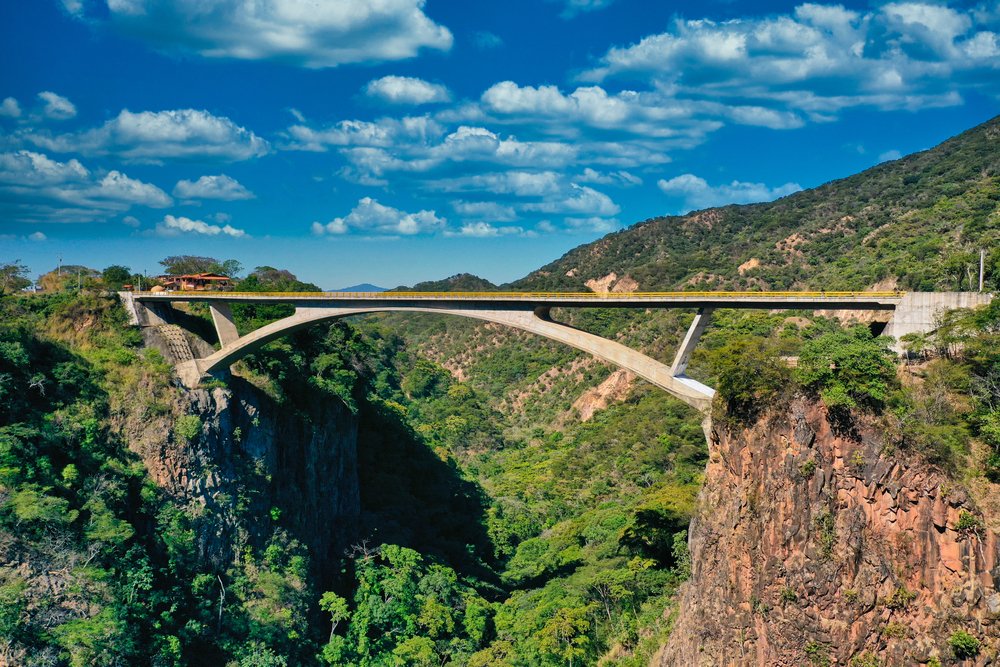
Mascota has a pleasant climate all year round. The average annual temperature is 21 °C, without pronounced seasonal variations.
The coldest month is January at 17°C, and it can rise slightly, reaching 21°C in April and 23°C in August, the warmest month.
Rainfall in Mascota reaches 1,028 mm per year, with a rainy season from June to September.
Things to do in Mascota, Jalisco
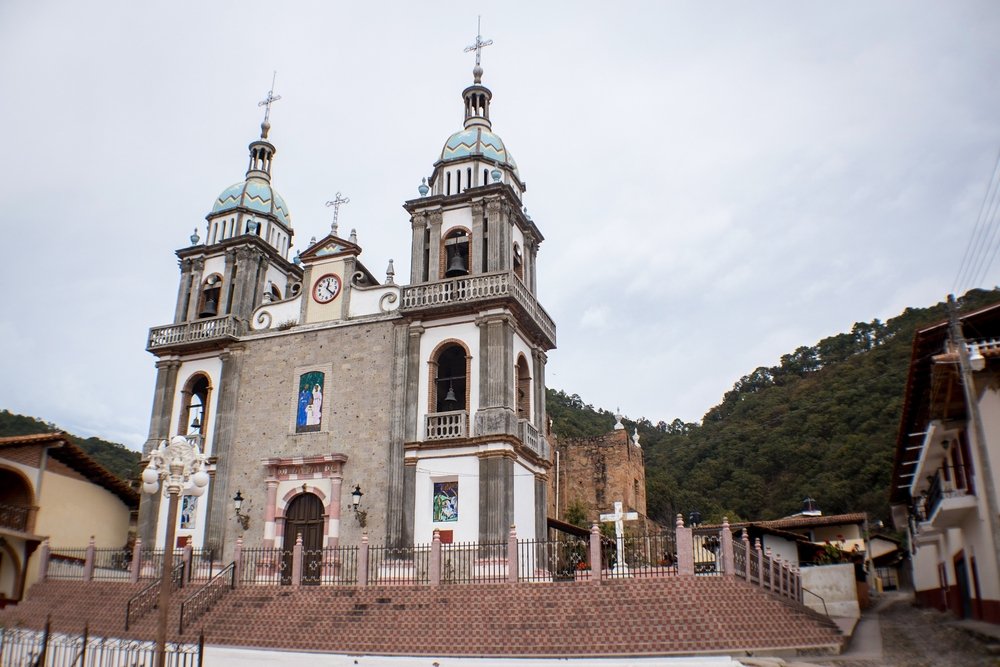
Mascota is a small town with multiple attractions for visitors.
It has important buildings from artistic, religious, and historical heritage.
Such as the Main Square, the Municipal Palace, the Parish of Our Lady of Sorrows, and the Unfinished Temple of the Precious Blood of Christ.
It also has exciting museums that cover the archaeological, historical, and cultural facets of the Magical Town.
These are the Archaeology Museum, the El Pedregal Museum, the curious Raul Rodriguez Museum, and the El Molino Museum.
The main archaeological site in town is El Pantano.
For nature and outdoor sports lovers, Mascota offers the Juanacatlán Lagoon, Corrinchis Dam, El Molcajete Volcano, La Narizona Rock, El Maipai Petrified Field, El Rincón de Ixcatan Waterfall, El Ocotillo Canyon, El Tacote Canyon, and La Mesa Colorada.
The towns of La Yerbabuena and Cimarrón Chico de la Raicilla are of tourist interest within the same municipality.
Among the Jalisco municipalities closest to Mascota are: Talpa de Allende, Atenguillo, and San Sebastián del Oeste.
Mascota’s Main Square
As you can see in some parts of the video, the space is presided over by a beautiful fountain and a superb and elevated neo-Mudejar kiosk, an architectural style developed in Spain between the late 19th and early 20th centuries.
This kiosk is a true work of art that distinguishes itself from most of the similar structures that became popular in the plinths of Mexican towns since the Porfiriato era as decorative and utilitarian elements.
Mascota’s Main Plaza is dotted with beautiful landscaped areas and benches donated by local businesses and individuals.
In front of the plaza are the Municipal Palace and other splendid mansions.
Visit La Parroquia de Nuestra Señora de los Dolores
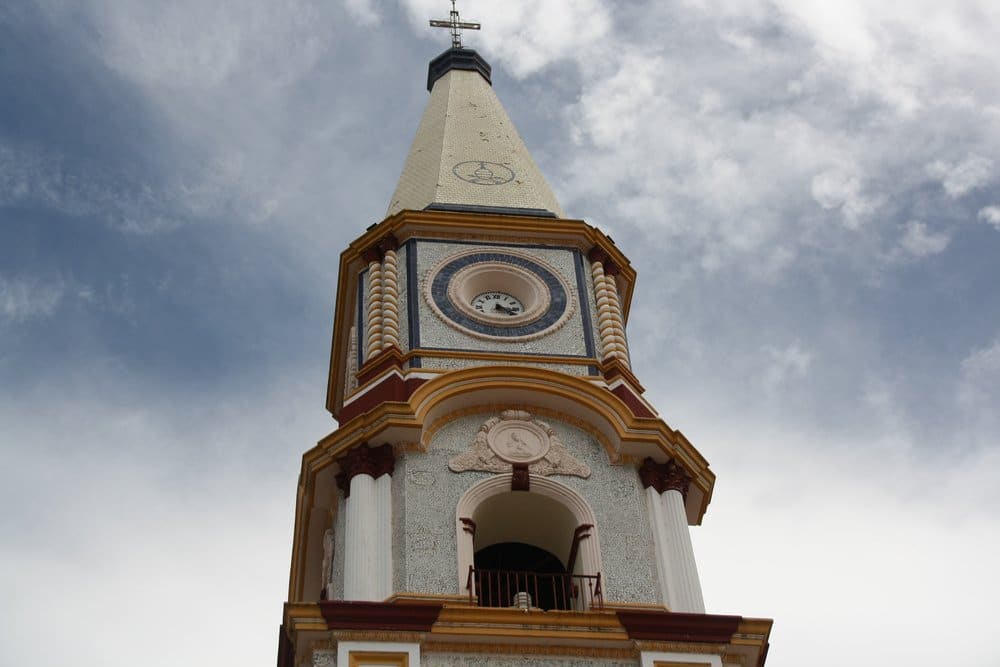
This temple in which the Virgin Mary is venerated in her invocation of Our Lady of Sorrows dates from the XVIII century, although its tower is from the XIX century.
The main facade consists of two bodies of quarry stone in baroque style, while the tower-belfry has three bodies and a pyramidal top crowned by a cross.
The interior is of a single nave, distinguishing the groined vaults and the altarpieces of neoclassical style.
The main altar has three quarry stone arches, and in its upper part, there is a fresco painting of the Apocalypse.
The temple has resisted several earth movements for more than 300 years.
The Unfinished Temple of the Precious Blood of Christ
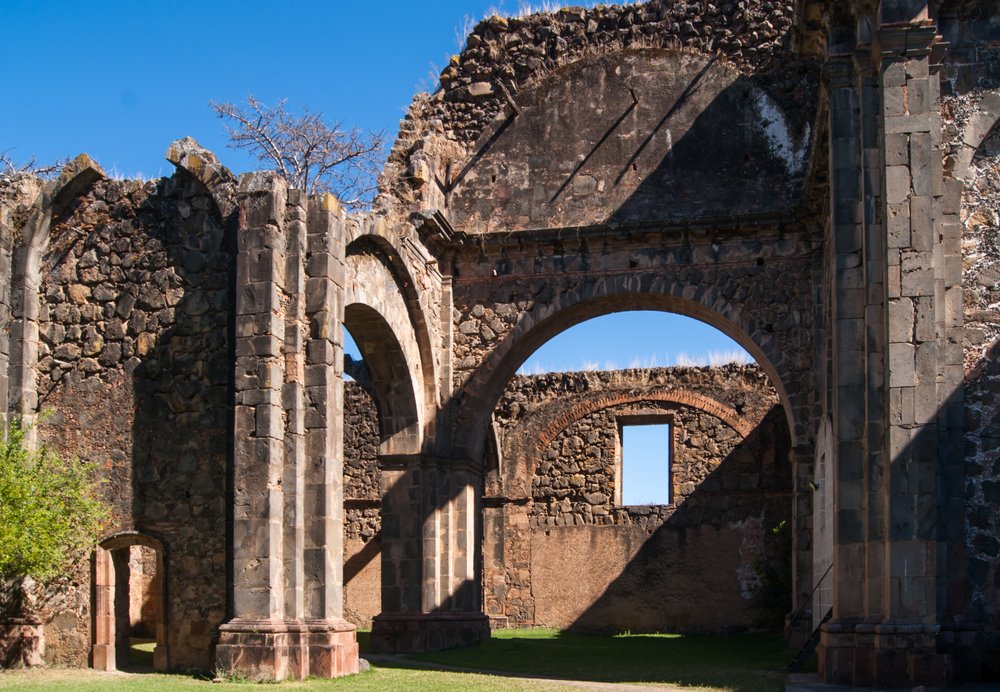
This majestic building of deep foundations and sturdy walls was left unfinished, dates from the 19th century, and is located five blocks from the main square.
This temple was destined for the Sacred Heart of Jesus and has a chapel built in 1905 on whose altar are the images of Christ, the Virgin Mary, St. Joseph, and Mary Magdalene.
The right side of the unfinished building and the surrounding areas were converted into a beautiful garden for cultural events, such as recitals, concerts, plays, and religious gatherings.
Where is the Mascota Archeology Museum?
This museum, located at 115 Allende Street, was opened in 2001 and displays archeological and historical pieces of Mascota.
Three of the rooms are destined for the exhibition of more than 600 objects recovered in the excavations carried out in a pantheon, with remains dated 800 years before Christ in the El Pantano site.
The objects are ceramics, worked stones, and bones, which were placed as offerings in the 175 excavated tombs.
The pre-Hispanic civilization that built this cemetery has been linked to the Capacha culture of Colima.
In the museum, there are also pieces rescued from El Embocadero and Coamajales’ sites and a collection of photos of petroglyphs.
What is exhibited at El Pedregal Museum?
This curious museum and gallery exhibit photographs and art objects made from carving stones of different shades, sizes, and shapes.
There are guitars, chess boards, chairs, beds, tables, clocks, pillows, hats, piñatas, television sets, telephones, and many other stone sculptures.
The photographic collection is spectacular, including characters and prints typical of Mascota’s life.
The museum is owned by writer and collector Francisco Rodríguez Peña, who placed witty phrases from some local characters in the bathrooms.
A wishing well was installed in the museum’s center, located at Morelos 64.
The Raúl Rodríguez Museum
This museum, housed in a colorful two-story building, was named in honor of Raúl Rodríguez Peña and offers a varied display of different cultural facets of Mascota Jalisco, including cinema, art, religion, archeology, and gastronomy.
One of the rooms is dedicated to actress Esther Fernández, a native of the town and the first star of the golden age of Mexican cinema, after starring in 1936, along with Tito Guízar, in the famous film Allá en el Rancho Grande.
Another room is dedicated to San José María Robles Hurtado, a priest from Mascota who was hanged in 1927 during the Cristero War.
Other spaces are dedicated to pre-Hispanic pieces, paintings, and regional cuisine from the 19th century.
El Molino Museum
The El Molino Museum is housed in a rustic and picturesque building in the Delegación de Navidad.
It was a flour mill in its good old days, and now it exhibits the millstones, scales, and other components used in the manufacturing process.
It is the only museum of its kind in the region, with its pieces in a perfect state of preservation.
You can imagine the tremendous efforts our ancestors had to make to earn their bread, starting with the diversion of powerful water currents to turn the milling equipment.
What was found at El Pantano Archaeological Site?
The archaeological discovery at the El Pantano site was made in 1997 by the married couple Juan José de la Torre and Chila Maldonado.
They discovered a cemetery with 43 pits, with the remains of 175 people and more than 600 objects placed as offerings next to the bodies, dated 800 years B.C.
The site is located on the slopes of a hill near Mascota.
Later, a team headed by archaeologist and anthropologist Joseph B. Mountjoy of the University of North Carolina and Greensboro conducted an investigation sponsored by the National Geographic Society between 2001 and 2005.
The study discovered that the findings coincide with the Capacha culture of Colima and pre-Hispanic Guatemalan jade jewelry pieces.
Explore Mascota Jalisco’s Juanacatlan Lagoon
This beautiful water body is located about 16 km. from Mascota on the dirt road from Mascota to – Yerbabuena – Navidad – Juanacatlán.
With an area of 24 hectares and a water depth that varies between one and 50 meters, the Juanacatlan Lagoon is frequented by sport fishing and canoeing enthusiasts.
In its surroundings, covered with beautiful forests, you can observe biodiversity, walk, hike, mountain bike, and other outdoor entertainment.
It is believed that the lagoon is located in the crater of an ancient volcano and its water source comes from the depths of the earth.
The Corrinchis Dam
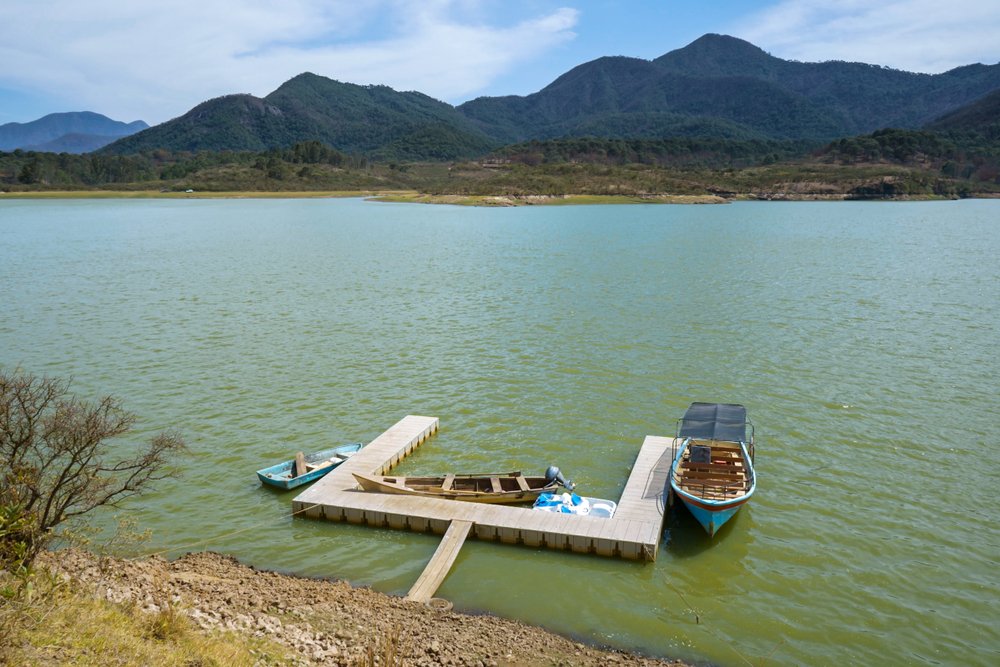
The current of the Mascota River feeds this beautiful place.
It is located about 10 minutes from the town and has a 30 million cubic meters capacity.
It extends for almost 8 km. and reaches 50 meters at its deepest part.
The road to the dam is enjoyable for the wild vegetation and crops.
In the lake, you can camp, sail, and practice sport fishing and horseback riding, and on its shores, there are cozy restaurants where you can eat delicious dishes or have a drink while watching the scenery.
What is the attraction of El Molcajete Volcano?
This volcano is located about 5 minutes southwest of Mascota and can be reached by a pleasant hike through ash, pine, oak, and oak trees.
It is named for the resemblance of its well-defined crater to the popular volcanic stone utensil Molcajete that Mexicans use as a mortar to grind grains, spices, and other vegetables.
Millions of years ago, the Mascota area was volcanically very active.
Still, El Molcajete has long since been waiting only for visitors who come to its summit to offer them the most spectacular views of Mascota and its surroundings.
Where is Mascota’s Piedra La Narizona?
Cerro El Narigón is a small elevation in the municipality of Mascota Jalisco, located near Cerro La Peña.
El Narigón is crowned by a large stone that could not have been given a name other than La Narizona (big nose).
To ascend to La Narizona you must follow a path covered with oaks, pines, huizaches, and bushes.
A few meters before reaching the monolith, there is a cave about 25 meters deep.
The elderly villagers tell legends of supernatural events, including the existence of a great treasure that would have been buried inside.
A treasure that is undoubtedly within your reach at Cerro El Narigón is the magnificent photographs you can take from its summit.
El Malpais Petrified Field
This stony field is located 3.5 km northwest of Mascota.
It was formed thousands of years ago after an intense eruption that covered the area with lava, rocks, and volcanic ash.
Since then, few plants have managed to break through the thick layer of rocks and dust to reach the sun, although locals tell a naive legend.
Some locals say that when passing through the center of the rocky area, they’ve found trees with fruit that they have eaten, but when any of them returned in search of more, they only find a desert of stones.
El Rincón de Ixcatan Waterfall
This beautiful waterfall that slides down about 6 meters of the rocky wall, forming a refreshing pool, is located approximately 12 km—Northwest of Mascota.
The La Plata stream feeds the waterfall, and before reaching it, there is a pit with a stream, surrounded by flat stones, where you can take a bath and camp.
The view and the sound of the waterfall are ideal for a relaxing time admiring the stream’s movement amidst the water’s soothing murmur.
You can also take beautiful pictures at El Rincón de Ixcatan.
What does El Ocotillo Canyon have to offer?
El Ocotillo Canyon is a gorge 250 meters long and 25 meters wide located in Mascota, 8 km from Hacienda Mirandilla.
When the researcher Joseph B. Mountjoy went to Mascota, he was looking for the site of El Ocotillo.
He diverted his attention to El Pantano because of the magnitude and importance of the archaeological discovery he had just made.
In El Ocotillo, 446 petroglyphs have been registered, several of them very different from those found on other sites.
Some of the animals drawn are marine, which is somewhat surprising given that the sea is some distance away.
It has basaltic walls of volcanic origin that reach up to 20 meters high and was a very peculiar pre-Hispanic ceremonial center.
El Tacote Canyon
This canyon is located near the community of Santa Rosa de Lima, 9 km. from Mascota.
It has an approximate length of 3.2 km. and a drop of 240 meters and has been cataloged for the practice of canyoning.
The canyon is crossed by the El Tacote, a permanent flow stream reaching 3 meters deep during the rainy season.
The longest height for rappelling is 12 meters.
Experts consider it suitable for this sport all year round, recommending greater precautions during the rainy season, which runs from June to September.
Among the canyon’s fauna, some species are at risk of extinction.
La Mesa Colorada, near Mascota Jalisco
This extension is located 2 km north of Mascota by the road that goes to the community of Galope.
It gets its name from the rocks of reddish tonalities that sprinkle its surface, and the heavy stream bathes it.
Whose waters form small cascades and pools in which it provokes to take a good bath in moments of heat.
About 300 meters along the banks of the Galope stream, there are crags on which more than 30 petroglyphs are engraved.
Another attractive plain in the municipality of Mascota is the Mesa del Durazno.
What are the attractions of La Yerbabuena?
Only two and a half kilometers from Mascota is the small and picturesque community of La Yerbabuena.
Corn, alfalfa, oats, and sorghum crops surround the town.
The village has typical red-roofed houses, and its chapel dedicated to the Virgin of Guadalupe has a simple facade and a bell tower.
Two other attractions of the town are the lagoon and the community museum. The lagoon is the habitat of ducks and geese and is used for water sports.
The museum exhibits obsidian objects, arrowheads, the components of an old flour mill, documents, and photos.
Cimarrón Chico and La Raicilla
It is a town located 15 km east of Mascota. It owes its name to the tradition of elaborating Raicilla (a type of agave moonshine), an alcoholic drink similar to mezcal made with the Agave lechuguilla.
Mascota and Cabo Corrientes are the two Mexican municipalities with the largest production of Raicilla, and in Mascota, the main production center is Cimarrón Chico de la Raicilla.
The drink is produced in establishments called taverns, and there are several that tourists can visit in the town.
Another attraction of Cimarrón Chico de la Raicilla is the beautiful stream that crosses the town.
Don’t miss San Sebastian del Oeste
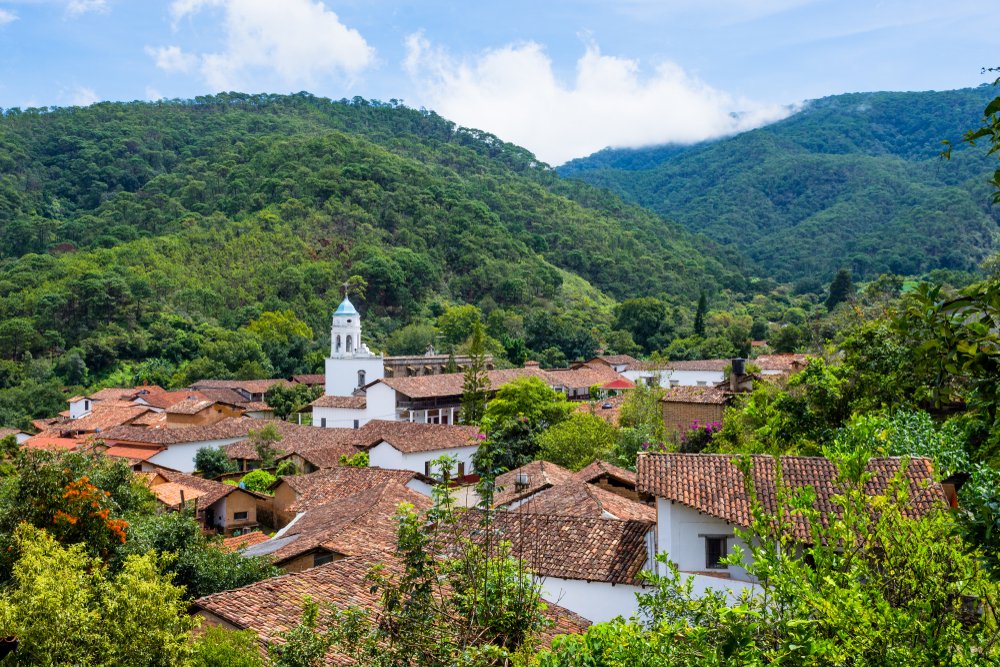
San Sebastian Oeste is located 48 km north of Mascota. It has charming spots on the way to Cerro de la Bufa, whose summit is over 2,400 meters above sea level, from where you will have an impressive view of the Bay of Banderas.
Part of the tour can be done on ATVs, and along the way, there are fruit plantations and coniferous forests.
In the town, the temple of San Sebastián and some old hotels stand out, as well as the Casa Museo Conchita Encarnación, an exhibit on the mining history of San Sebastián Oeste that is housed in a large mansion from the 1700s.
Mascota Jalisco: Try the food!
One of the most popular dishes in Mascota is a succulent pozole, which the local cooks make exquisitely, with the meat cooked just right and the corn kernels whole but perfectly tender.
This tasty pozole is served in restaurants in generous portions.
Another long-standing culinary tradition in Mascota is its confectionery based on the fruits and vegetables that grow in the fertile municipal lands, such as sour pomegranate, tangerine, grapefruit, guava, pineapple, and sweet potato.
The guava rolls, sweet potato candies with pineapple, and fruit ice creams are among the favorites.
What are the main festivals?
September 15 is the day of Our Lady of Sorrows, and from the previous days, the celebration begins in Mascota.
The municipality’s faithful pilgrimage to the temple carries flowers and other offerings, and the town is filled with the roar of the fireworks and the music of Mariachi and Tambora.
There are parades of floats, and the farmers decorate their tractors with milpas and other farm products.
The celebration of the patron saint coincides with the national holidays and a civic act, and a popular festivity takes place in the main square.
On November 2, the Day of the Dead is commemorated with fervor and colorfulness, with traditional altars and a parade with allegorical costumes.
Where to stay in Mascota Jalisco?

Mascota has a wide range of hotels with beautiful buildings harmoniously integrated into the mountainous surroundings of the city.
- Hotel Encanto de La Sierra is very comfortable with a great location in a peaceful and beautiful environment
- Hotel Posada Santa Rita is a country hotel on the outskirts of town, with beautiful gardens and excellent service
- Mesón de Santa Elena is conveniently located downtown, and its rooms are spacious and comfortable
Other good choices for lodging in Mascota are Hotel Posada Santa Rita, Hotel Boutique Meson Santa Lucia, and Hotel Chuyita.
What are the best restaurants in Mascota?
- Restaurante Navidad serves delicious pozole and is also known for its delicious fish
- La Casa de mi Abuelita has tasty breakfast and a well-stocked buffet
- Café Nápoles is a place that is often a bit crowded due to the high demand for its pizzas, pastries, and coffee
- Tapanco serves Italian and international food
- La Calle Ancha Pizza & Beer is the place to go for a crispy pizza and a bubbly drink
- El Molcajete Más Grande Del Mundo, at Presa Corrinchis, displays at its entrance a huge molcajete, which certainly must be the largest on the planet
Did you like this virtual tour of Mascota Jalisco? I hope that you will be able to take the real tour very soon.

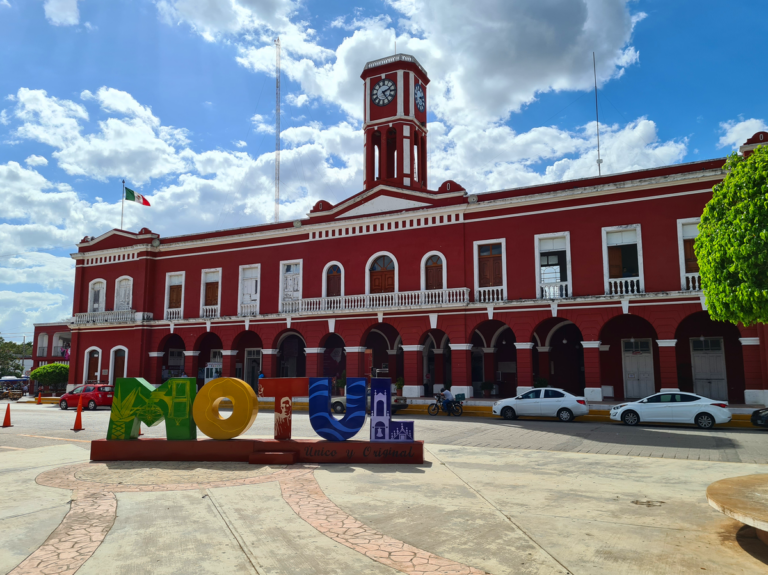

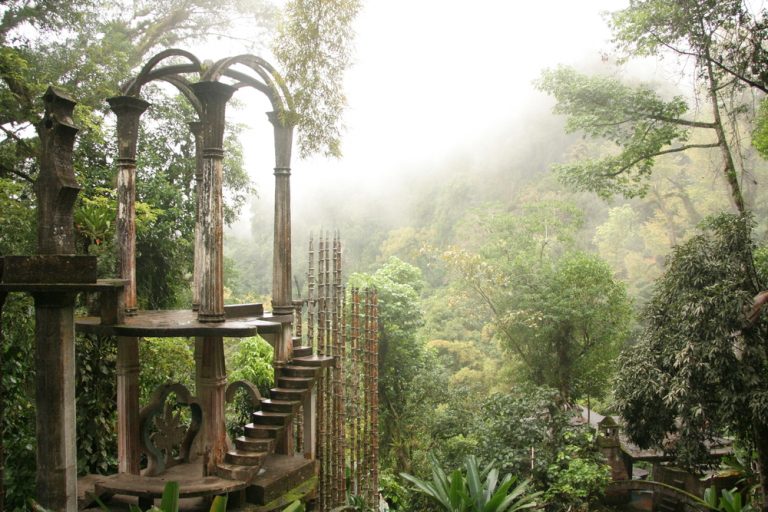
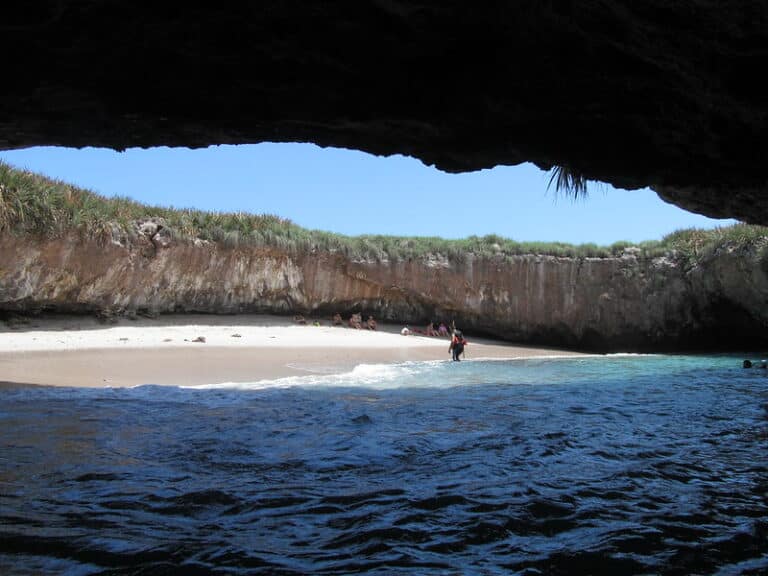
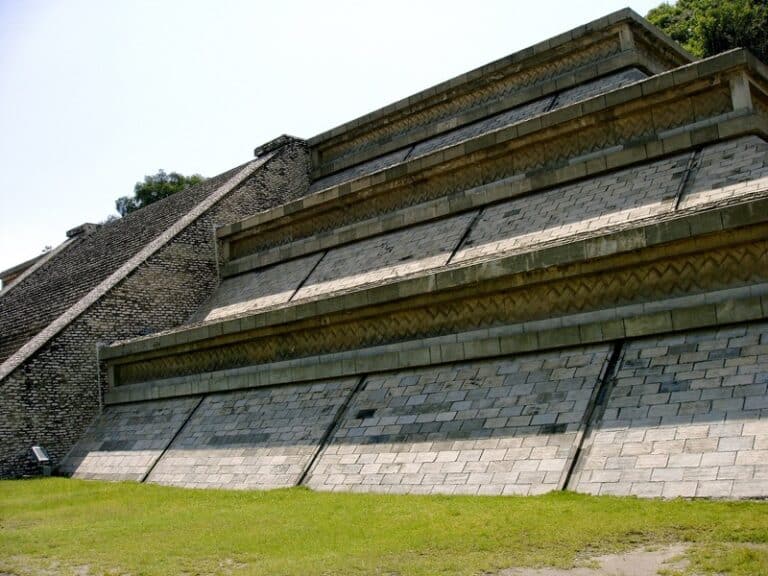
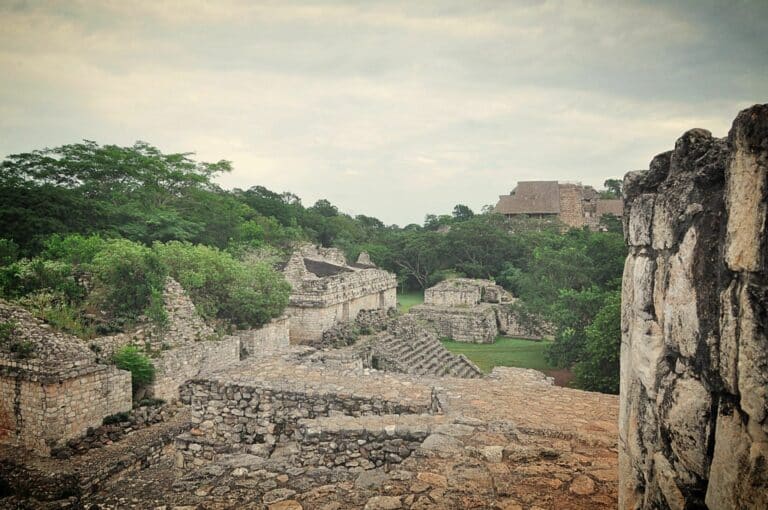
Hey there, just reading your page. I love Mascota and on our last visit we tried to go to the Petrified forest, but we could not access it through the road as there is a farm there and they offered no access. Did you manage to get up there?
Also Canon de Ocotillo, we looked all around Mirandilla, asked locals, but never found it. How did you access it? Trying to go back this year.
Hey Wendy,
The petrified forest is actually the “Malpais Volcano.” Just ask a cab driver or any of the locals what the best way to get to Malpais is.
If I remember correctly, you access through La Yerbabuena community.
El Ocotillo Canyon and its famous petroglyphs are also part of the same volcano. Finding the way in is a bit tricky though. You’ll have to ask around.
I hope this helps. Happy new year!